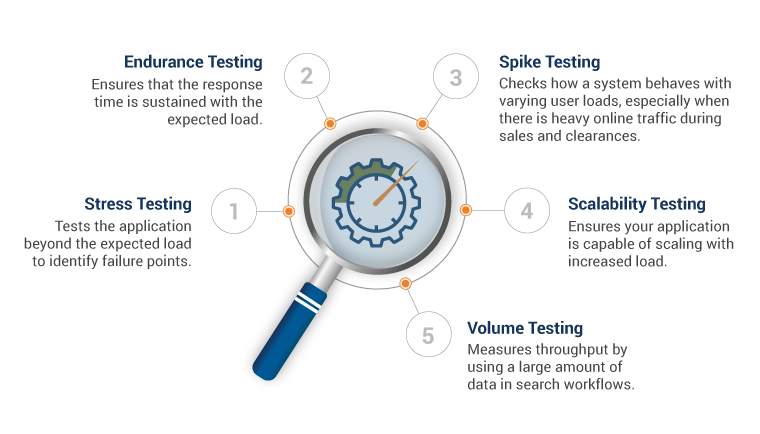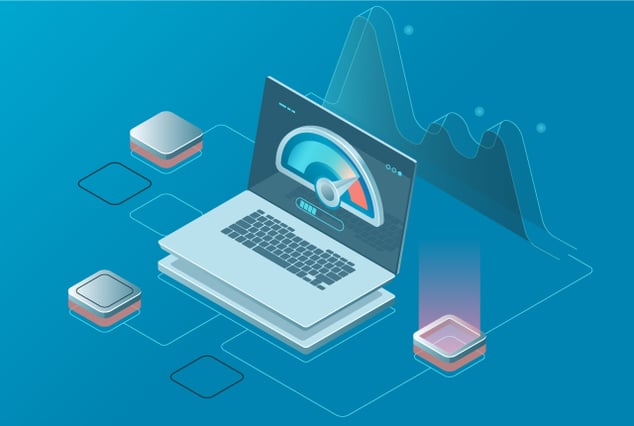Market Trend for E-commerce Growth
During the COVID pandemic, a customer visiting store rate has declined while online shopping has become the first preference for buyers. Now, the business model has changed. Many SMEs are approaching towards B2C model over e-commerce platforms.
It increased the demand for the software development industry as businesses looked forward to competing with other e-commerce giants through online shopping apps. Hence, their application needs to be performance efficient.
The e-commerce market has grown significantly during the pandemic. However, let us get a better understanding of the growth of the US e-commerce industry over the last ten years. The image below clearly shows that the sharpest growth of this industry happened in the first quarter of 2020.
US E-commerce Penetration Percentage
10 years’ Growth in 3 Months
How E-commerce Performance Testing Changed
Over time, e-commerce applications have changed to provide a better user experience with the addition of new technologies like:

- Personalized product recommendation engines
- Chatbots providing virtual services
- Embedded media
- Augmented reality providing a real experience of product
With the addition of these embedded tools and technologies, handling a variety of third-party integration and creating test data for them require a lot of effort. This makes the whole process of load testing an e-commerce platform very challenging
For e-commerce, testing should mainly focus on ensuring performance and availability. All integrated components, which play a vital role in application performance need to be involved while creating a test plan.
Types of Performance Testing for E-commerce
Usually, performance testing is conducted to check the responsiveness, speed, and stability of an application, and ensures that a computer, device, or network performs as expected under specific workload conditions. However, when it comes to testing e-commerce applications, there are other tests that should be run to monitor the performance:

Key Testing Scenarios
To ensure the overall application performance, a few considerations/scenarios should be undertaken during testing:
- There should be more focus on search transactions as they are the most used scenarios and help to verify database Input/Output flows.
- Placing orders from different categories, thus simulating the behavior of real customers.
- Creating new user records in the application database to verify registration workflows.
- Placing concurrent orders for highly in-demand products.
- Guest/existing users perform product quick searches and verify purchase workflows.
- Cover inventory-based scenarios to ensure that inventory can withstand with desired user load.
- Involve third-party services such as email servers, API, and other social media test accounts (created via developers’ mode) workflows in a test plan.
Payment Gateway Testing
Most applications use third-party gateways for their payment services which are tested separately. However, if you want to test end-to-end scenarios for your application integrated with payment gateways, we recommend using sandbox environments to test how your application performs when payment gateway process concurrent requests.

Performance testing of payment gateways should focus on the following points:
- How does the payment gateway handle successful and failed transactions
- Response time of payment transactions between merchant and customer
- Payment gateway sessions
Before testing payment gateways, you should have test data like dummy credit/debit cards, UPI details, and payment gateway error codes to check errors specifically for payment gateway services.
Recommendations

- Configure your test email account before receiving bulk service emails so that they are not blocked by the server.
- Response time should be consistent across different platforms
- Look for related services status followed by any unforeseen issues during the test.
- If testing payment services, consider commonly used payment methods like UPI, Credit, Debit cards, and Wallets.
- 2FA (if any) should be disabled before running the test.
- Execute test with different network configurations (2G/3G/4G) and geo-locations.
Conclusion
Considering today's e-commerce market, it's important to conduct performance tests on your application to convert incoming traffic into loyal customers and provide a seamless experience to end-users.
QASource’s engineers can help you ensure that your application runs efficiently by identifying bottlenecks and recommending solutions.
Have Suggestions?
We would love to hear your feedback, questions, comments and suggestions. This will help us to make us better and more useful next time.
Share your thoughts and ideas at knowledgecenter@qasource.com


